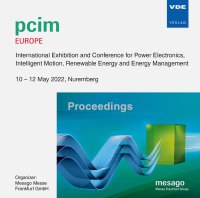Bonding Between a Ceramic Wiring Board and Cooling Plate Using Copper Sintering Paste
Konferenz: PCIM Europe 2022 - International Exhibition and Conference for Power Electronics, Intelligent Motion, Renewable Energy and Energy Management
10.05.2022 - 12.05.2022 in Nürnberg, Germany
doi:10.30420/565822066
Tagungsband: PCIM Europe 2022
Seiten: 6Sprache: EnglischTyp: PDF
Autoren:
Nakako, Hideo; Natori, Michiko; Ishikawa, Dai; Ejiri, Yoshinori; Minami, Kazuhiko (Showa Denko Materials Co., Ltd., Japan)
Matsushima, Seiji (Showa Denko Co., Ltd., Japan)
Inhalt:
In recent times, there has been a requirement for a die-bonding material that can help achieve high-temperature operation and high heat dissipation. To meet this requirement, we are developing the copper sinters for die bonds and recently, the Cu sintering paste [P007] for pressure-assisted sintering has improved the stencil printability and tackiness of the chip mount. This Cu sintering paste was applied to the large bonding area between a SiN ceramic wiring board and a cooling fin. Material development based on the Cu sinter [P007] and application of a fractioned stencilprinted trace enabled bonding without voids. Through this bonding, 8 % of the overall thermal resistance of the power module decreased compared to the one bonded using the SAC solder. The thermal cycle reliability of large-area bonding with the Cu sintering paste was evaluated and compared to that of the SAC solder. An increase in thermal resistance was reached to 10 % with an increase in cycles from < 500 to ~1500 when the bonding was performed using the Cu sintering paste instead of the SAC solder. SAC solder bonding broke in all bonding area after 1500 thermal cycles. In contrast, the Cu-sintered bonding broke a few millimeters from the bonding edge after 2000 cycles.


